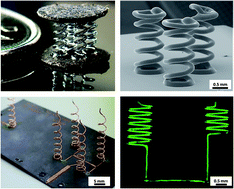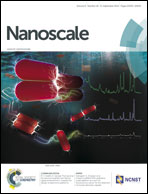Three-dimensional printing of freeform helical microstructures: a review
Abstract
Three-dimensional (3D) printing is a fabrication method that enables creation of structures from digital models. Among the different structures fabricated by 3D printing methods, helical microstructures attracted the attention of the researchers due to their potential in different fields such as MEMS, lab-on-a-chip systems, microelectronics and telecommunications. Here we review different types of 3D printing methods capable of fabricating 3D freeform helical microstructures. The techniques including two more common microfabrication methods (i.e., focused ion beam chemical vapour deposition and microstereolithography) and also five methods based on computer-controlled robotic direct deposition of ink filament (i.e., fused deposition modeling, meniscus-confined electrodeposition, conformal printing on a rotating mandrel, UV-assisted and solvent-cast 3D printings) and their advantages and disadvantages regarding their utilization for the fabrication of helical microstructures are discussed. Focused ion beam chemical vapour deposition and microstereolithography techniques enable the fabrication of very precise shapes with a resolution down to ∼100 nm. However, these techniques may have material constraints (e.g., low viscosity) and/or may need special process conditions (e.g., vacuum chamber) and expensive equipment. The five other techniques based on robotic extrusion of materials through a nozzle are relatively cost-effective, however show lower resolution and less precise features. The popular fused deposition modeling method offers a wide variety of printable materials but the helical microstructures manufactured featured a less precise geometry compared to the other printing methods discussed in this review. The UV-assisted and the solvent-cast 3D printing methods both demonstrated high performance for the printing of 3D freeform structures such as the helix shape. However, the compatible materials used in these methods were limited to UV-curable polymers and polylactic acid (PLA), respectively. Meniscus-confined electrodeposition is a flexible, low cost technique that is capable of fabricating 3D structures both in nano- and microscales including freeform helical microstructures (down to few microns) under room conditions using metals. However, the metals suitable for this technique are limited to those that can be electrochemically deposited with the use of an electrolyte solution. The highest precision on the helix geometry was achieved using the conformal printing on a rotating mandrel. This method offers the lowest shape deformation after printing but requires more tools (e.g., mandrel, motor) and the printed structure must be separated from the mandrel. Helical microstructures made of multifunctional materials (e.g., carbon nanotube nanocomposites, metallic coated polymer template) were used in different technological applications such as strain/load sensors, cell separators and micro-antennas. These innovative 3D microsystems exploiting the unique helix shape demonstrated their potential for better performance and more compact microsystems.

- This article is part of the themed collection: Helical Micro- and Nanostructures

 Please wait while we load your content...
Please wait while we load your content...